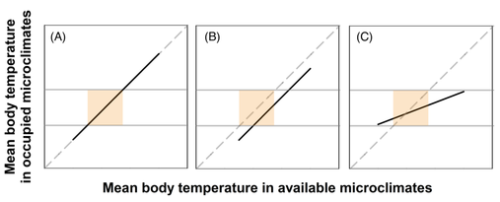2023-01-16 ノースカロライナ州立大学(NCState)
ノースカロライナ州立大学の研究者らは、アリが気温の上昇に対応して行動を調整せず、最適なマイクロハビタットが存在する場合でも、最適ではない場所に留まることを明らかにしました。この結果は、アリが温暖化した生態系に対応した行動をとることができない可能性を示唆している。
アリは外温動物であり、体温が環境に依存する動物である。これらの動物は日常生活でさまざまな温度を経験するが、ほとんどの外温動物は、外温動物が生命活動のすべての機能を最もよく発揮できる、いわゆる最適機能温度よりもわずかに低い環境を好む。この最適温度より高い環境では、外温動物はその生理機能の限界に近づく危険性がある。つまり、暑すぎると死んでしまう。
しかし、地球規模の気候変動によって、昆虫の外温動物がどのように、あるいはどのように行動を調節して、温暖だが致死量以下の温度域(生理的には可能だが最適ではない温度域)を回避するかについては、ほとんど分かっていない。
そこで、ノースカロライナ州立大学の研究者たちは、昆虫の種がこれらの温暖化した亜致死温度に対してどのように反応するかを知るために、ノースカロライナ州でよく見られる5種のアリを調査した。研究者たちは、森林生態系でアリを数え、収集し、収集場所の気温を測定して、利用可能なマイクロハビタットの分布を特定しました。また、独自のアリ温度計を使用して、アリ自身の温度(アリの色や体の大きさによって異なる)を測定しました。最後に、それぞれの種の好みの温度を調べるため、研究者は実験室用にアリを数匹集め、温度勾配を制御した長方形のチャンバーに入れました。
その結果、研究室ではアリが明確な温度嗜好性を持っていることがわかったが、野外ではアリが好みの気候で活動する頻度は偶然の予想よりわずかに多かっただけだった。このことは、アリが温度上昇に適応する能力を欠いているか、あるいは何らかの制限を受けていることを示唆している。
<関連情報>
- https://news.ncsu.edu/2023/01/climate-conundrum-study-finds-ants-arent-altering-behavior-in-rising-temperatures/
- https://besjournals.onlinelibrary.wiley.com/doi/10.1111/1365-2656.13860
行動と生理は外温動物に対する温暖化の影響を緩和できるか?都市に生息するアリの実験 Can behaviour and physiology mitigate effects of warming on ectotherms? A test in urban ants
Elsa Youngsteadt, Sara Guiti Prado, Kirsten Joanna Keleher, Michelle Kirchner
Journal of Animal Ecology Published: 15 January 2023
DOI:https://doi.org/10.1111/1365-2656.13860

Abstract
- Global climate change is expected to have pervasive effects on the diversity and distribution of species, particularly ectotherms whose body temperatures depend on environmental temperatures. However, these impacts remain difficult to predict, in part because ectotherms may adapt or acclimate to novel conditions or may use behavioural thermoregulation to reduce their exposure to stressful microclimates.
- Here we examine the potential for physiological and behavioural changes to mitigate effects of environmental warming on five species of ants in a temperate forest habitat subject to urban warming.
- We worked in eight urban and eight non-urban forest sites in North Carolina, USA; sites experienced a 1.1°C range of mean summer air temperatures. At each site, we documented species-specific microclimates (ant operative temperatures, Te) and ant activity on a transect of 14 bait stations at three times of day. In the laboratory, we measured upper thermal tolerance (CTmax) and thermal preference (Tpref) for each focal species. We then asked whether thermal traits shifted at hotter sites, and whether ants avoided non-preferred microclimates in the field.
- CTmax and Tpref did not increase at warmer sites, indicating that these populations did not adapt or acclimate to urban warming. Consistent with behavioural thermoregulation, four of the five species were less likely to occupy baits where Te departed from Tpref. Apparent thermoregulation resulted from fixed diel activity patterns that helped ants avoid the most inappropriate temperatures but did not compensate for daily or spatial temperature variation: Hotter sites had hotter ants.
- This study uses a novel approach to detect behavioural thermoregulation and sublethal warming in foraging insects. The results suggest that adaptation and behaviour may not protect common temperate forest ants from a warming climate, and highlight the need to evaluate effects of chronic, sublethal warming on small ectotherms.



